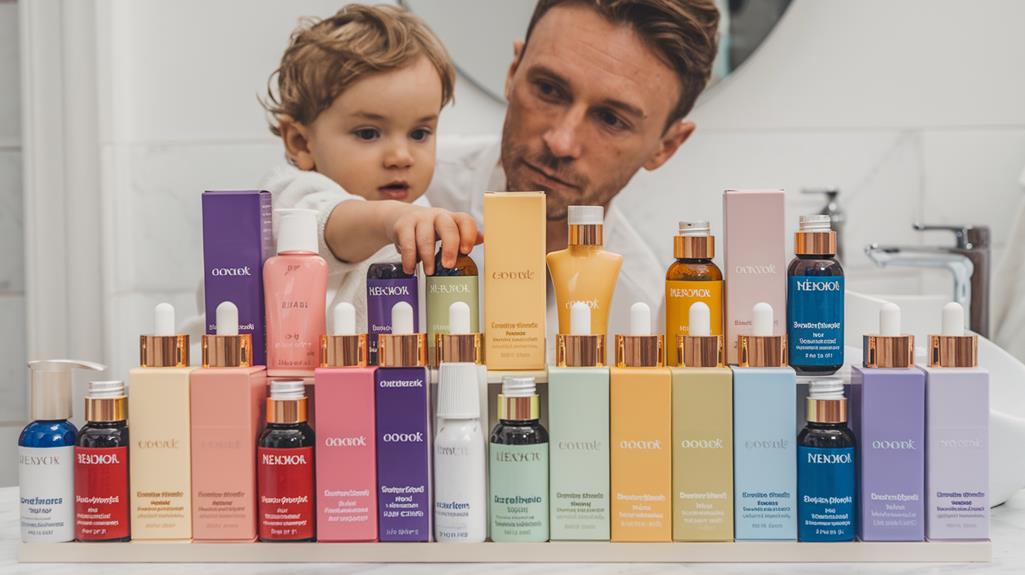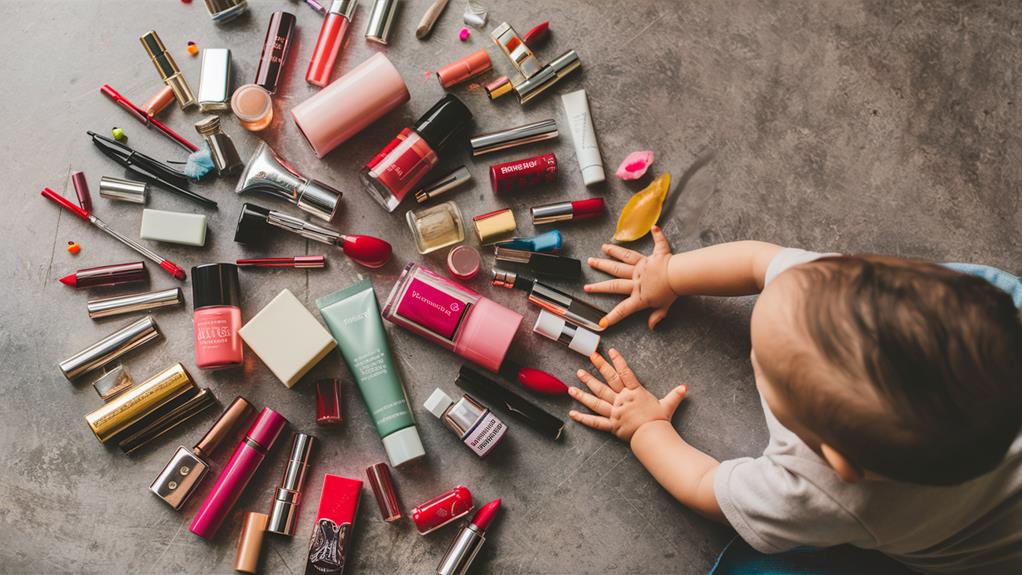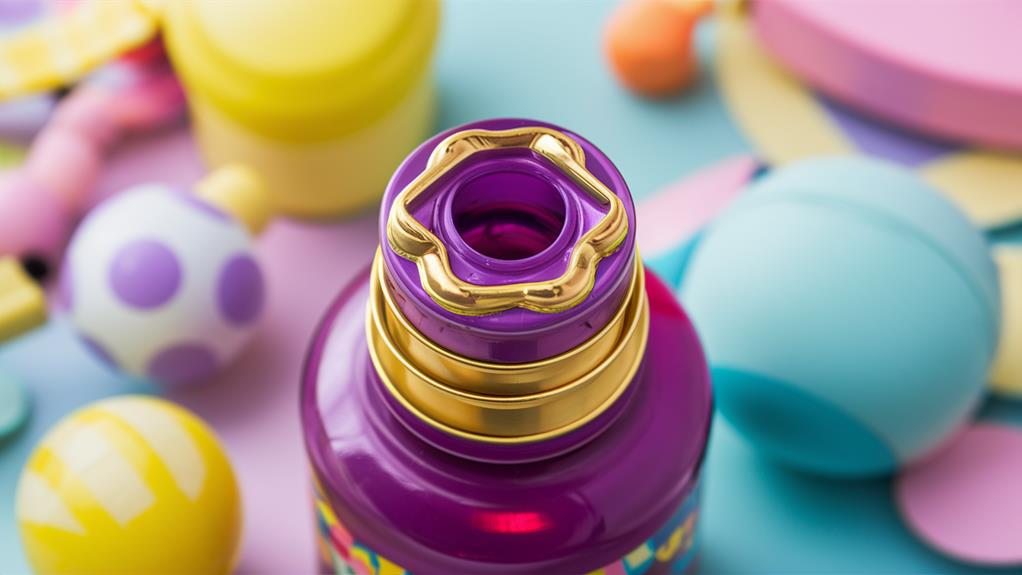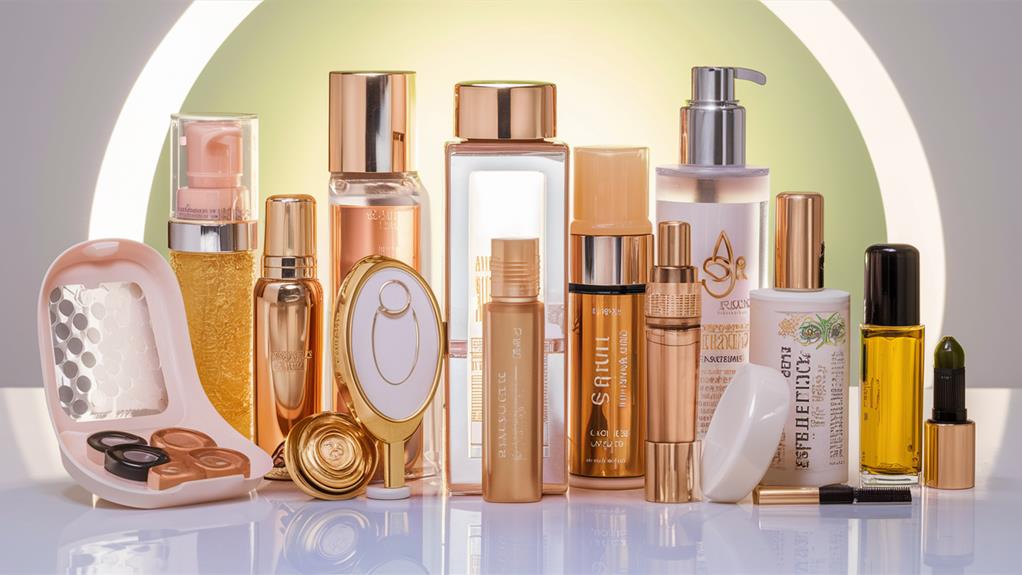
Child-resistant packaging for beauty products is essential for preventing accidental poisonings in children. With over 64,000 children treated for injuries related to personal care items, safety is a top priority. These packages are designed so 80% of tested children under five can't open them within 10 minutes. They balance safety and ease for adults, helping guarantee you can use products without hassle. Compliance with regulations like the Poison Prevention Packaging Act is critical, as it protects vulnerable populations. Stay informed about how effective packaging design can secure your home, and you'll gain insights into creating a safer environment.
Main Points
- Child-resistant packaging significantly reduces the risk of accidental poisonings among children, especially from beauty products that may be mistaken for food or drinks.
- Compliance with the Poison Prevention Packaging Act (PPPA) ensures that beauty products are packaged safely, protecting vulnerable populations from hazardous exposure.
- Effective child-resistant solutions allow normal adult use while preventing access by children, striking a balance between safety and convenience.
- Implementing child-resistant features enhances brand reputation and fosters consumer trust, as safety increasingly influences purchasing decisions.
- Tamper-evident seals alongside child-resistant closures improve product integrity and further safeguard against accidental ingestion and contamination.
Risks of Non-Child-Resistant Packaging

In regard to beauty products, the risks of non-child-resistant packaging are alarmingly high.
Between 2002 and 2016, over 64,000 children under five were treated for injuries caused by personal care products. A staggering 76% of these injuries involved swallowing hazardous substances, emphasizing the urgent need for effective child safety measures.
Hair care products alone accounted for 52% of serious injuries requiring hospitalization, while nail care products contributed to 28%. Many caregivers underestimate these risks, often mistaking colorful packaging for food or drinks.
Without Child-Resistant Packaging, everyday beauty items can lead to dangerous situations for young children. It's essential to recognize the potential hazards and prioritize child safety by choosing products with protective packaging solutions.
Features of Effective Child-Resistant Solutions
Child-resistant packaging serves as an essential barrier between children and potentially hazardous beauty products. This type of packaging is engineered to prevent access by children under five, with studies showing that 80% of tested children can't open it within 10 minutes.
Effective solutions often include tamper-evident seals and airtight closures, ensuring safety while maintaining product integrity. For beauty products, features like child-resistant caps and moisture protection play a significant role in safeguarding against ingestion and contamination of harmful substances.
It's vital that these packaging requirements also allow normal adult use without difficulty, striking a balance between child safety and convenience. With thousands of children treated for injuries from personal care products, prioritizing effective child-resistant solutions is non-negotiable.
Regulatory Standards for Child Safety

The safety of children is directly influenced by the regulations surrounding packaging for beauty products. Under the Poison Prevention Packaging Act (PPPA), child-resistant packaging is mandatory for items that pose ingestion risks to children under five.
The U.S. Consumer Product Safety Commission (CPSC) enforces standards requiring that 80% of children tested can't open such packaging within 10 minutes. This regulation is essential, as beauty products like mouthwash and certain cosmetics can be hazardous.
C-R packaging must also guarantee that 90% of adults can easily open and reseal it, maintaining usability for caregivers. Compliance with these standards is critical in preventing accidental poisonings, reflecting the importance of regulatory measures in protecting our youngest and most vulnerable.
Benefits of Implementing Child-Resistant Packaging
Implementing child-resistant packaging for beauty products offers numerous advantages that extend beyond mere compliance with regulations.
Here are three key benefits you should consider:
- Enhanced Safety: This packaging greatly reduces the risk of accidental poisonings, protecting children from hazardous personal care products.
- Brand Reputation: By prioritizing safety, you enhance your brand's reputation and build consumer trust, showing your commitment to social responsibility.
- Legal Compliance: Adhering to child-resistant packaging regulations helps you avoid potential legal penalties, fostering customer loyalty as safety becomes increasingly important in purchasing decisions.
In a world where colorful packaging can easily confuse children, using child-resistant packaging is vital for safeguarding vulnerable populations and ensuring your products are handled responsibly.
Best Practices for Packaging Design

When designing packaging for beauty products, safety must take center stage to protect young children from potential hazards.
Implement child-resistant packaging that's challenging for kids under five to open; studies show that 80% of tested children can't access harmful substances within ten minutes.
Adhere to the Poison Prevention Packaging Act (PPPA) to guarantee compliance for specific beauty items.
Clearly label your products to distinguish those suitable for households without young children, as non-child-resistant options must be marked to prevent misuse.
Furthermore, using tamper-evident seals alongside child-resistant closures enhances safety by keeping products secure until they reach adult hands.
Prioritizing these best practices safeguards children and promotes responsible product use.

